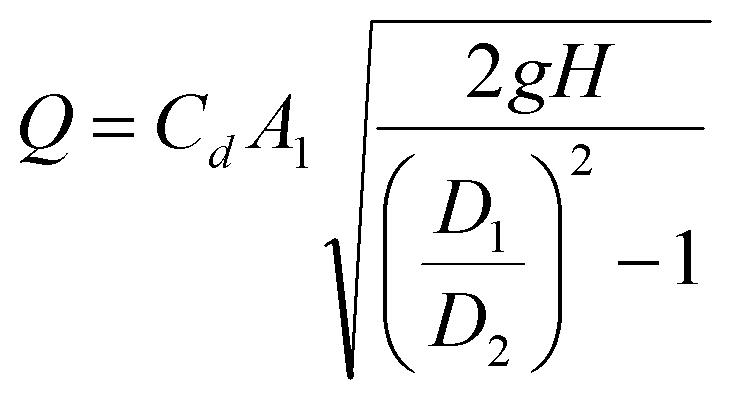Calculations
- Plot the discharge relationship for each device in Excel and determine the equation using a “power” type trendline.
- Determine k and n values for each device from the trendline.
- Re-calculate k using least-squares, by setting n = 0.5 (use Solver to minimise total error by changing the value of k)
- Using the two values of k (from trendline and Solver), derive the value of Cd from the discharge equation for each device as shown below. Approximate expected values of Cd are also provided below for comparison with your results.
- Comment on the results, and in particular how the results compared to expected values for Cd.
Supporting Information
For each device, you will need to look at the discharge equation (see equations for each device, listed below) in the form Q = khn and then, using the “k” values obtained from the procedure on the left, rearrange the discharge equation to solve for Cd.
Bend meter, (Cd ~ 0.60 for comparison with experimental value)

where A is the cross-sectional area of the pipe (use nominal diameter given in the Apparatus section) and H is the difference in pressure head measured on the inside and outside of the bend.
Venturi meter, (Cd ~ 0.97 for comparison with experimental value)

where A1 is the upstream cross-sectional area of the pipe (use nominal diameter given in the Apparatus section), H is the difference in pressure head measured on the inside and outside of the bend, D1 is the upstream pipe diameter and D2 is the diameter in the throat (see Apparatus section).
Pitot tube meter (Cd ~ 0.99 for comparison with experimental value)

where A is the cross-sectional area of the pipe (use nominal diameter given in the Apparatus section) and H is the difference between the stagnation pressure and the static pressure.
Orifice meter (Cd ~ 0.66 for comparison with experimental value). Discharge equation identical to Venturi
Triangular weir (Cd ~ 0.6 for comparison with experimental value)

where θ is the weir angle and H is the height of water above the crest.